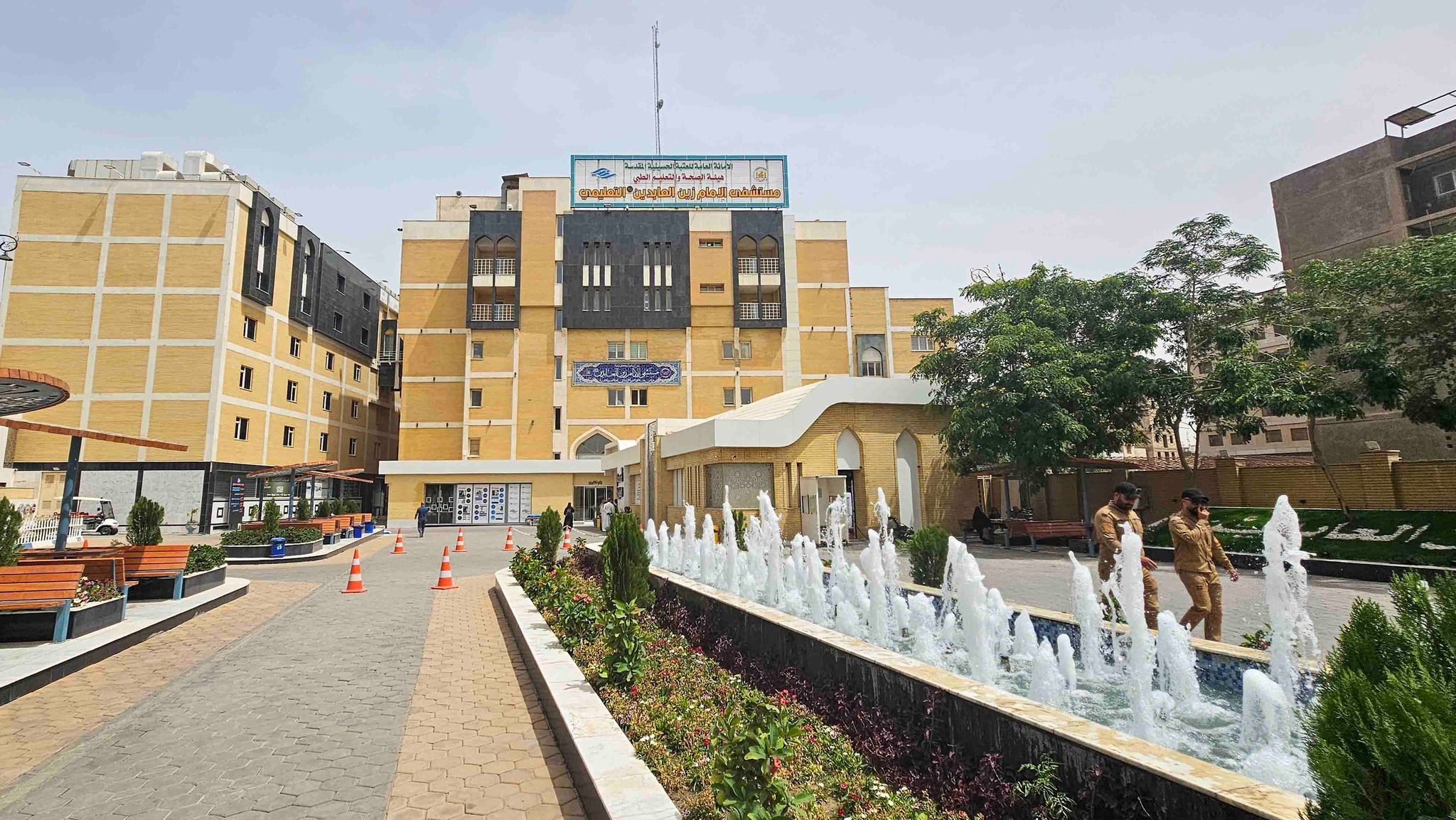Lost Pages of History Revealed by Speaking Graves
My work led me to visit Pakistan in 2013, during which I had the opportunity to visit several shrines belonging to Ahl al-Bayt (peace be upon them). Before that, circumstances of forced migration brought me to Syria in 1980, where I also visited the Shrines of Ahl al-Bayt. Following this, a semi-forced migration led me to Iran, where I was fortunate to embark on visits and prayers at numerous shrines of Ahl al-Bayt. These experiences unfolded within the context of the Eastern Islamic world.
Subsequently, I undertook a journey to explore the western Islamic world. Along this journey, I visited the Shrines of Ahl al-Bayt in Egypt, Morocco, and Senegal. Egypt, in particular, boasts many Shrines of saints, which have acquired a special sanctity. Undeniably, revered shrines can also be found in India, the Islamic republics of the former Soviet Union, North Africa, and beyond. I hope that with time, associated with good health and financial stability, I may have the opportunity to visit these sacred sites.
Dr. Nadheer al-Khazraji
What do these numerous shrines scattered throughout the Arab and non-Arab Islamic worlds signify? Why do the majority of Muslims respect them while only a few seek to destabilise them? What compels the descendants of the Prophet (peace be upon him and his family), from Fatimah and Ali (peace be upon them), to journey far from Medina, whether by force or willingly? How did they reach the farthest corners of the earth, and how did they depart from this world? Can we believe in all these shrines, some of which have been recently discovered? Can we trust the attribution of all these shrines to Ahl al-Bayt (peace be upon them)? These are the questions that echoed through my mind as I stood at the shrine of the martyr Yahya bin Zaid al-Shahid in the village of Miami in Khorasan in 1981, and the questions returned three years ago as I visited a shrine attributed to Lady Ruqayyah, daughter of Imam Ali ibn Abi Talib (peace be upon them), in Lahore, Pakistan, preceded by the tombs of the Ahl al-Bayt in Sham and North Africa.
These questions, and others like them, have certainly crossed the minds of others who have followed similar paths or journeyed to various cities. They are legitimate questions, especially considering that some shrines have been recently announced, and it is not unlikely that some may fabricate them for several reasons. I have often heard from followers in countries devoid of shrines of Ahl al-Bayt about their wish for shrines in their own countries where they can raise their hands to God in supplication. Some distant populations have found alternatives, such as in India and Pakistan, where symbolic shrines for the Imams and righteous individuals from the Prophet's family have been established, allowing them to turn to God through visitation and prayer.
Undoubtedly, the increase in the number of shrines around the world reveals, in one aspect, the dispersion of the descendants of Ahl al-Bayt and their scattering across countries, whether by force or willingly. Additionally, some individuals excessively profess love and falsely claim affiliation with Ahl al-Bayt. Others exploit this association for personal gains, while others are driven by malicious intent to manipulate the emotions of followers for their own selfish interests. Likewise, some act in alignment with the interests of enemies of the Ahl al-Bayt.
The distinguished scholar Sheikh Muhammad Sadiq al-Karbasi gained significant recognition when he dedicated a chapter in his unique encyclopaedia, "Dairat al-Ma'arif al-Husayniyya," spanning four volumes, meticulously tracing the lineage of Imam Hussein (peace be upon him) and his descendants. In the first two volumes, he delved into the lineage of Imam Hussein (peace be upon him) through ten generations, while in the third and fourth volumes, he continued to trace the lineage of Imam Hussein (peace be upon him) and their genealogies up to Imam al-Mahdi, Muhammad ibn al-Hasan al-Askari (may Allah hasten his noble reappearance).
We have in our possession the recently published third volume of "Al-Hussein: His Lineage and Progeny," released in 2015 by the Hussaini Center for Studies in London. This volume spans 582 pages in royal octavo size and continues Sheikh Muhammad Sadiq al-Karbasi's examination of the lineage of Imam Hussein (peace be upon him), tracing it from his direct descendants to Imam Ja'far ibn Muhammad al-Sadiq (peace be upon him).
Challenging Times
Anyone tracing the branches of the Hussaini genealogy in this part of the Hussaini encyclopedia discovers the extent of the suffering endured by Ahl al-Bayt at the hands of local and central authorities, not to mention their followers and supporters. This led many of them to wander far from the capital and centres of power to avoid arrest, imprisonment, and death, patiently enduring their trials.
The researcher
l-Karbasi, as he meticulously documents information about the descendants of Imam Hussain through his sons and daughters, has revealed horrifying scenes of the physical elimination of the Prophet's offspring during the Umayyad and Abbasid eras. Therefore, it's no surprise that today we witness acts of killing, slaughter, burning, crucifixion, and brutal flogging being committed in the name of Islam and the noble Prophet. The corrupt successors are merely renewing what their wicked predecessors did, considering them role models. Those who haven't studied history or lived through its historical void may see what Islam's claimants are doing today as something new in daily life, and they earnestly try to absolve Islam of any blame. Undoubtedly, they are sincere in their actions, as Islam's spirit is peace and harmony. However, the reality is that the history of Islamic nations ruled in its name is filled with dark and grim pages, especially during the Abbasid era and the harm inflicted upon the Imams of the Ahl al-Bayt, leading to the dispersion of their followers across the earth. This oppressive policy persists to this day in some Muslim countries, where sectarianism and organised killings are practiced under the guise of protecting the legacies of their predecessors.
There are numerous examples, among which are Yahya ibn Abdullah al-Muhad, the son of Abdullah, the son of Hasan, the son of Ali, and the son of Abu Talib (peace be upon him), whom al-Karbasi mentioned in his discussion about the lineage of Imam Hussein (peace be upon him) through his daughter Fatimah al-Wasita, the wife of Abdullah al-Muhadhdhab. This Yahya, famously known as Yahya the Companion of the Deilam, died in the year 175 AH while imprisoned by Harun al-Rashid, the Abbasid caliph, in Baghdad. He was placed in a pool of mud, where he died of hunger. It is said that al-Rashid It was reported that he was confined to the residence of Al-Sindi bin Shahik, which was foul-smelling, and the entrance was sealed shut until his demise.
Through examining dozens of names of cities mentioned in this section, which contain shrines of the Ahl al-Bayt or their descendants, it becomes evident that Iraq, Persia, the Arabian Peninsula, and Egypt are among the countries where Alawite families are most prevalent. Due to the severe oppression they faced, many of these families concealed their lineage, which was subsequently lost to their descendants over time. However, most of them retained their lineage without publicly declaring it until suitable conditions arose. Yet, some falsely claimed this lineage.
History was on the verge of being engulfed in the darkness of its abyss if not for the Hussaini resurgence, as stated by Professor Man Hie Nguyen in the foreign introduction to the third part of "Al-Hussein: His Lineage and Progeny": "Undoubtedly, the unique sacrifice of Imam Hussein (peace be upon him) and his faithful followers is what shook the Islamic world and awakened it from its slumber, compelling Muslims to question why the grandson of the beloved Prophet was killed with such brutality. These legitimate questions revealed to the people the true nature of Yazid and his supporters. Imam Hussein's challenge to the rule of Yazid, even unto accepting death and martyrdom, forever changed the face of the world and empowered the nation to determine its destiny and set the compass of its movement."
Although Professor Man Hie Nguyen is not religious, his human nature leads him to say: "Imam Hussein came to the barren land and settled in Karbala to establish a new just system. He embodied the concept of righteous justice practically, placing the desire for wealth and power under the authority of reason, all for the sake of a balanced life that preserves human dignity in an atmosphere of security, safety, and peace—a joyful life for all humanity, in every time and place."
Because the pen is the commodity of the author of the Vietnamese preface, who resides in the capital, Ho Chi Minh City, he appreciates what Al-Karbasi has penned in the encyclopaedia, which has reached about 900 volumes. Therefore, he concludes his preface by saying, "I am astonished by what Dr. Al-Karbasi has written in the Hussaini encyclopedia. My eyes widened in amazement as I realised that Al-Karbasi began writing it more than 25 years ago. This is a real achievement that not just anyone can accomplish individually, as Al-Karbasi has done in writing about a noble figure like Hussein. This encyclopedia demonstrates clear investigation and documentation, making it widely accepted by everyone," a fact understood even by those with the slightest share of ink from the pen.




